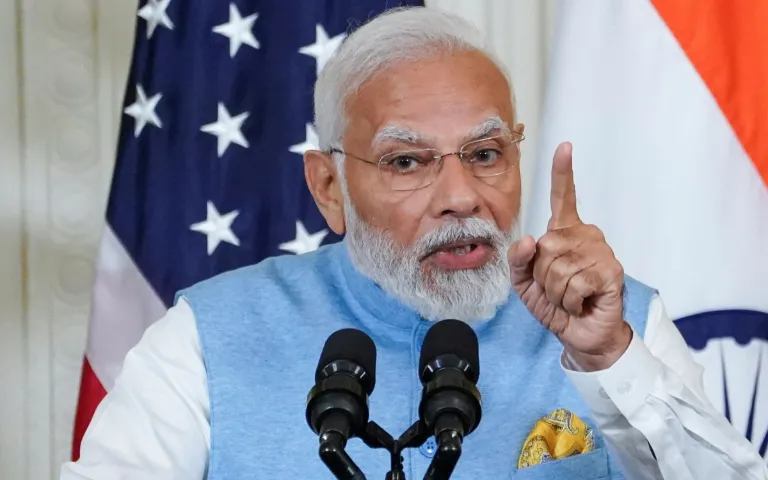PM Narendra Modi’s Trip Enhances India-US Collaboration in Technology – From Microchips to Artificial Intelligence
The technology partnership between the United States and India is expanding, with a particular emphasis on semiconductors, advanced telecommunications, critical minerals, space exploration, quantum computing, and artificial intelligence (AI).
In the semiconductor sector, Micron Technology, Inc. is investing more than $800 million in a new $2.75 billion semiconductor assembly and test facility in India.
Sanjay Gupta, President, Electronics and Semiconductor Association of India, said: “This important decision marks a major milestone for the Indian semiconductor industry and reinforces the country’s commitment to being a global leader in advanced semiconductor manufacturing.”
“This approval also showcases the potential of India’s domestic talent and ability to participate in the global semiconductor supply chain. We believe this landmark project will not only strengthen India’s position as a semiconductor manufacturing hub, but also provide a platform for collaboration, knowledge sharing and technology transfer,” he added.
Meanwhile, Applied Materials has announced it will build a Semiconductor Center for Commercialization and Innovation in India, and Lam Research is training 60,000 Indian engineers with its “Semiverse Solution” to accelerate India’s semiconductor education and workforce development goals.
Prabu Raja, Head of Semiconductor Products Group, Applied Materials, said, “The company is excited to build on our 20 years of success in India by creating a facility where the country’s top engineers, suppliers and researchers can work side by side to develop new innovations.”
“We believe Applied’s strong engineering talent base will work more closely with domestic and international companies operating in India to strengthen the base equipment supply chain serving the global semiconductor industry,” he added.
The countries have decided to work together to strengthen their supply chains for critical minerals, while India has joined the Minerals Security Partnership. Meanwhile, India’s Epsilon Carbon Limited was said to invest $650 million in a greenfield electric vehicle battery component plant in the United States.
In the area of advanced telecommunications, India and the United States have launched joint public-private task forces for the development and deployment of Open RAN systems and advanced telecommunications research and development. They will also work together to launch an open RAN deployment in both countries.
In space exploration, India has signed the Artemis agreement and is working with NASA to send astronauts to the International Space Station. Both countries also collaborate with the Laser Interferometer Gravitational-Wave Observatory and the NASA-ISRO Synthetic Aperture Radar (NISAR).
In the field of quantum computing, India and the US have established a joint India-US quantum coordination mechanism and signed an implanting arrangement to support joint research. Google is also building models that support more than 100 Indian languages through its AI research center in Bengaluru.
The countries also cooperate in cutting-edge research in other areas, such as nuclear physics and artificial intelligence. The US National Science Foundation has announced 35 joint research collaborations with India’s Ministry of Science and Technology, and India’s Department of Atomic Energy is making a $140 million in-kind contribution to the US Department of Energy’s Fermi National Laboratory.
In support of the US-India Initiative on Critical and Emerging Technologies (iCET), the US-India Commercial Dialogue is launching a new “Innovation Handshake” program to connect each country’s startup ecosystems. This program addresses regulatory barriers to cooperation and promotes employment. the growth of emerging technology and emphasizes opportunities for the development of high-tech know-how.
In addition, India’s Sterlite Technologies Limited has committed $100 million to develop a fiber optic cable production complex near Columbia, South Carolina, which will enable India to export $150 million worth of optical fibers annually.
The deepening technology partnership between the United States and India is a sign of the strong and growing relationship between the two countries. This partnership is essential for both countries to compete in the global economy and meet the challenges of the 21st century.




